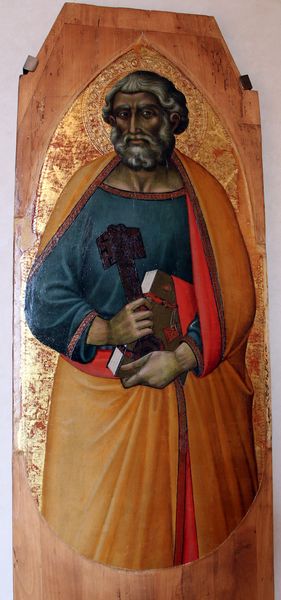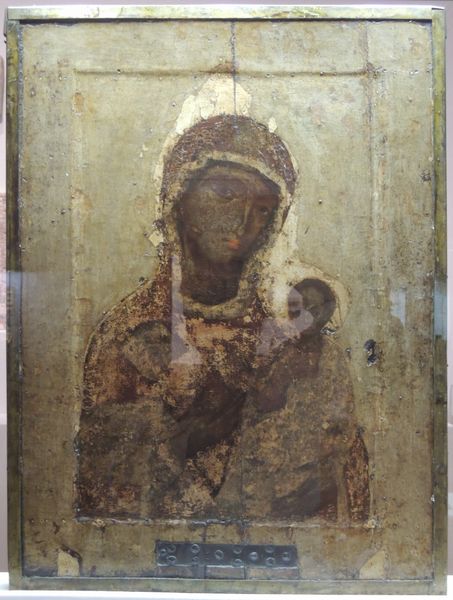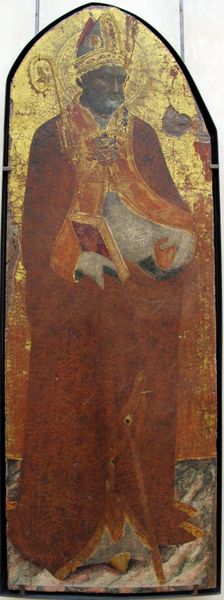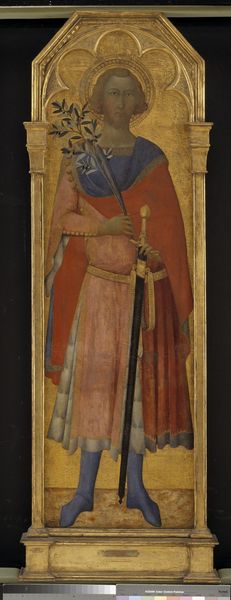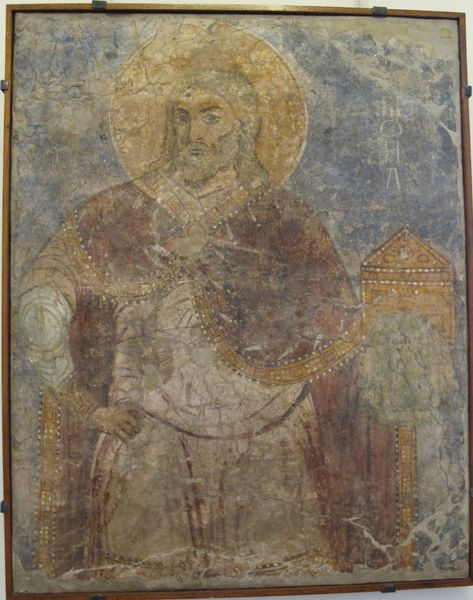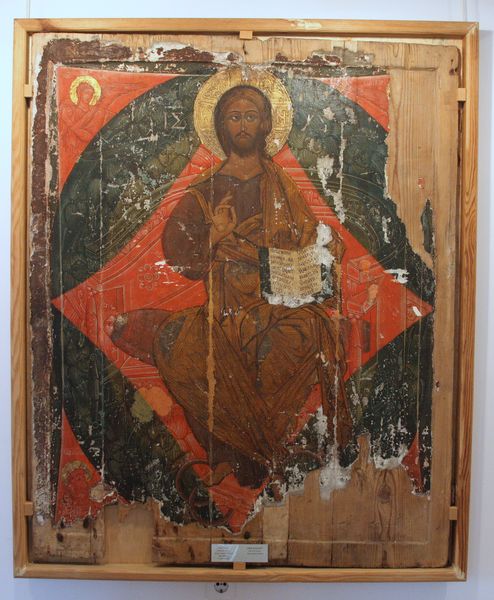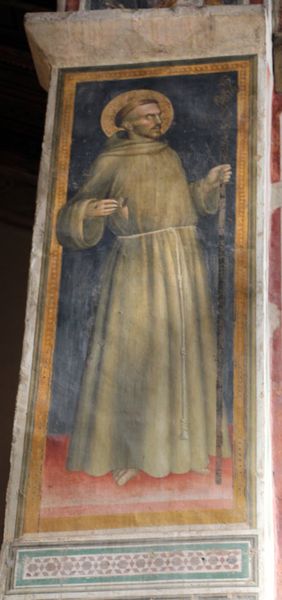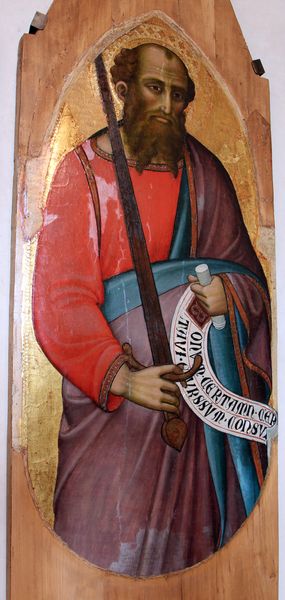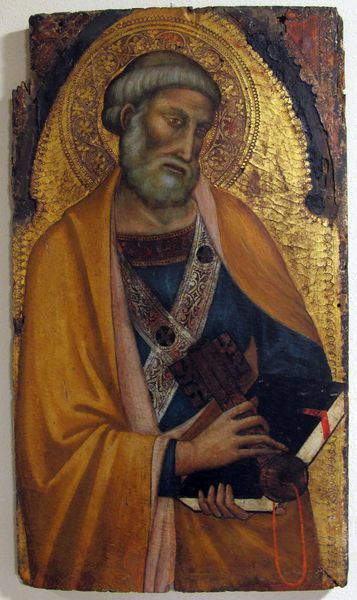
tempera, painting
#
portrait
#
gouache
#
byzantine-art
#
medieval
#
tempera
#
painting
#
figuration
#
oil painting
Copyright: Orthodox Icons,Fair Use
Curator: Here we have "Saint John the Baptist," a tempera on panel painting from 1395. The portrait presents a figure cloaked in solemnity, wouldn't you agree? Editor: Indeed. The initial impression is one of melancholy. The somber hues and downcast gaze evoke a sense of profound introspection. The very composition seems to funnel our attention toward the saint’s burdened expression. Curator: It's compelling how the artist uses visual cues to signify John the Baptist's role. His ragged beard and hair imply his desert dwelling, the hardships he embraced, and perhaps also speak to his prophetic zeal. Editor: And consider the gesture of his right hand, open yet subtly restrained. This speaks to an ambivalent position—inviting us, perhaps, while also recognizing limitations, alluding to the profound responsibility accompanying his prophetic calling. His slightly turned head creates an intimate, albeit melancholic, rapport with the viewer. Curator: I'm struck by the Byzantine artistry, even through what seems like a thick application of tempera that adds texture. Notice the almost rigid folds of his cloak. How does this formality serve to heighten, or perhaps contrast with, the emotional tone? Editor: The rigid formality serves a dual purpose. It reinforces the divine authority vested in Saint John while simultaneously throwing his deeply human emotionality into sharp relief. The gold background, conventional for icons of this period, elevates the spiritual significance. Curator: Yet the overall effect seems somewhat austere, eschewing decorative excess. The color palette is rather limited—mostly earth tones—emphasizing John's ascetic persona and setting him apart from earthly extravagance. Editor: Quite. By stripping away visual distraction, the painting focuses all symbolic and emotional weight on the saint himself. His enduring appeal rests, at least partly, in this evocative concentration. Curator: An efficient synthesis of form and content that leaves a lasting impression on anyone willing to dwell in silent contemplation. Editor: Agreed. It compels us to examine the man, the myth, and the meaning.
Comments
No comments
Be the first to comment and join the conversation on the ultimate creative platform.

